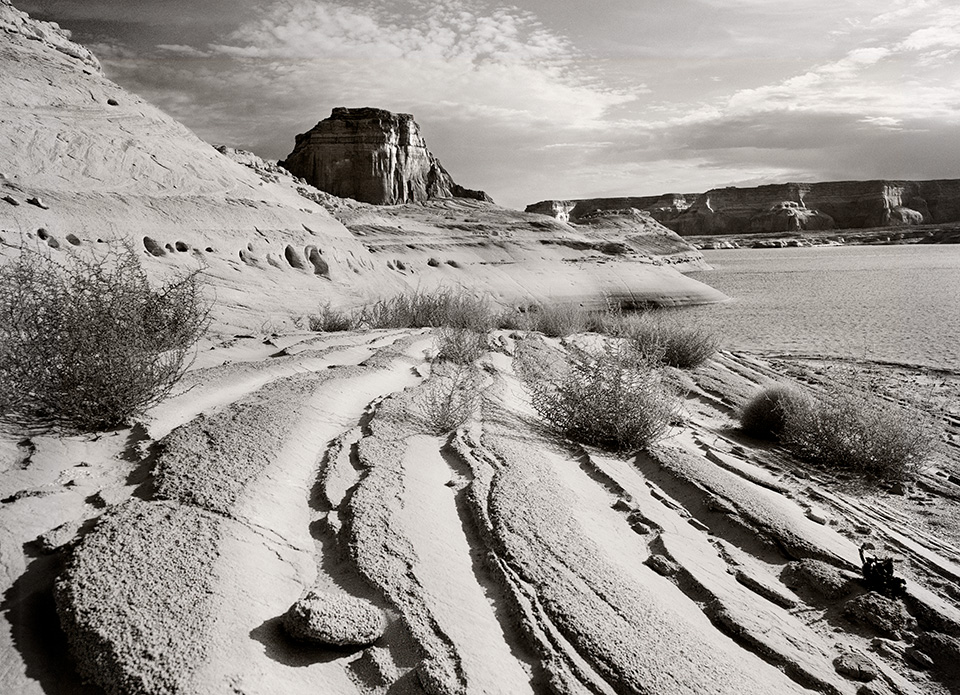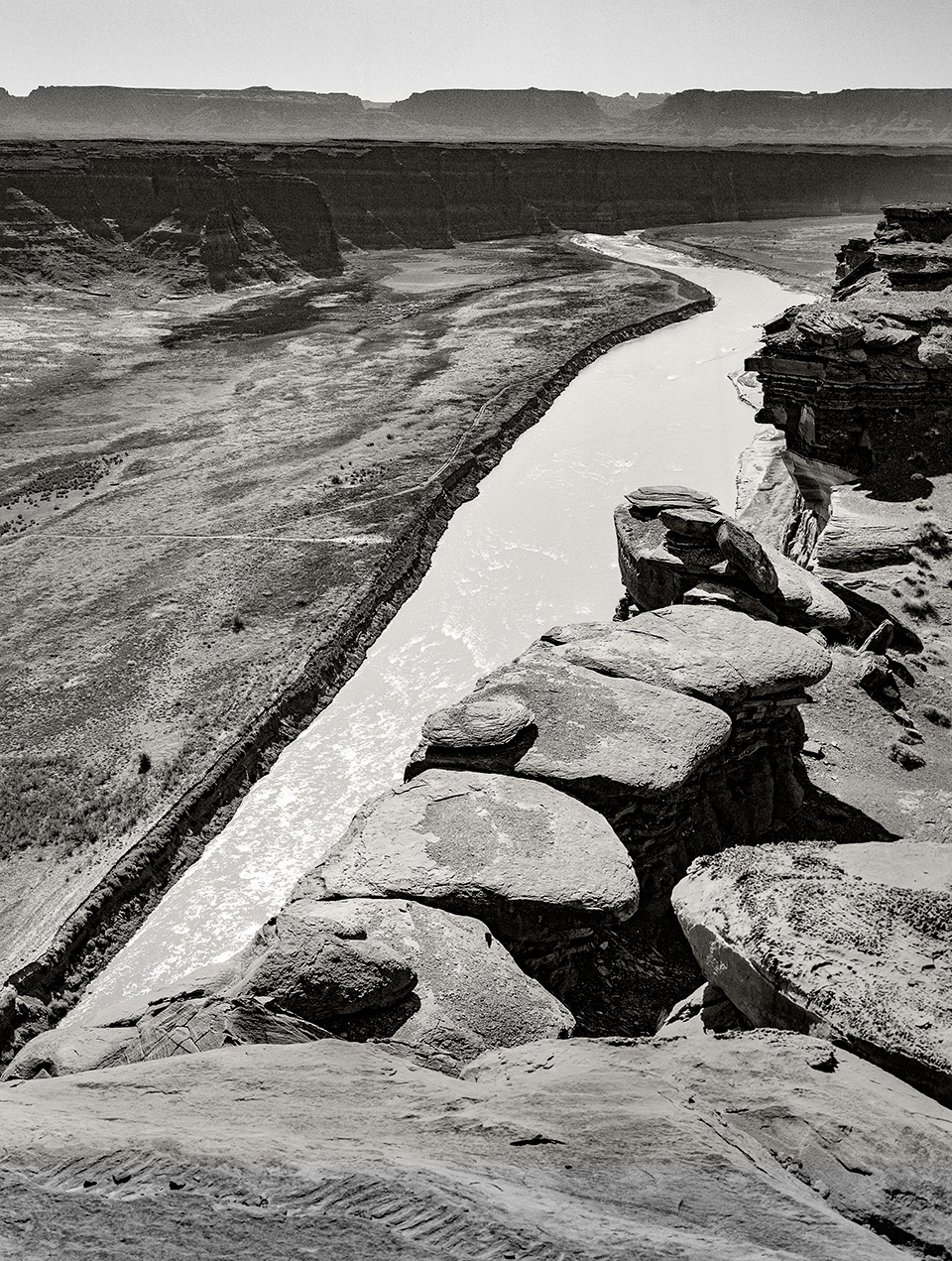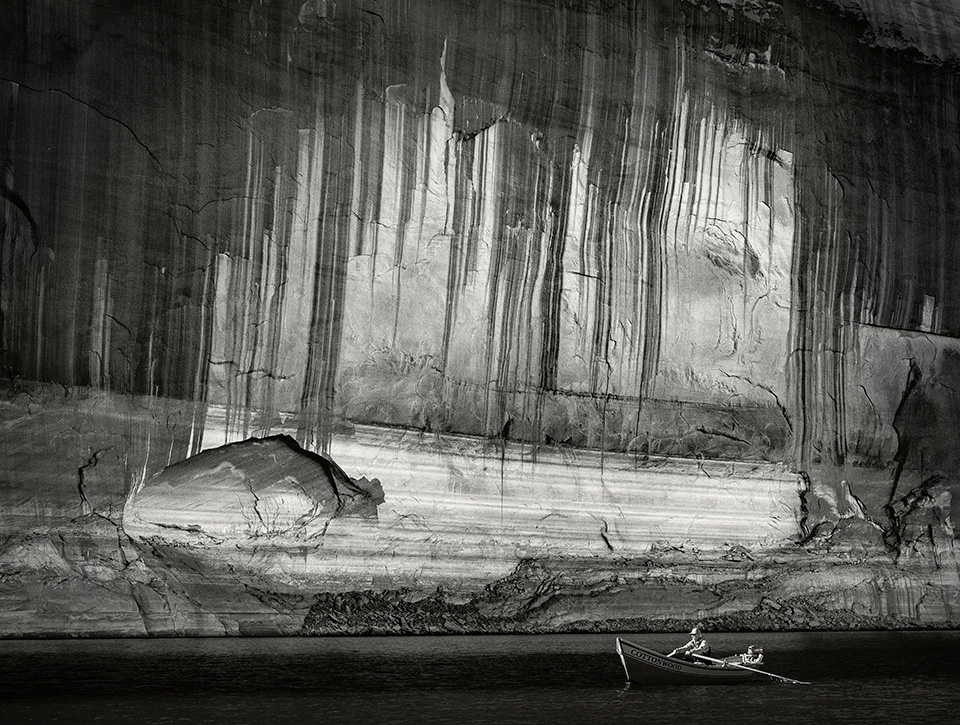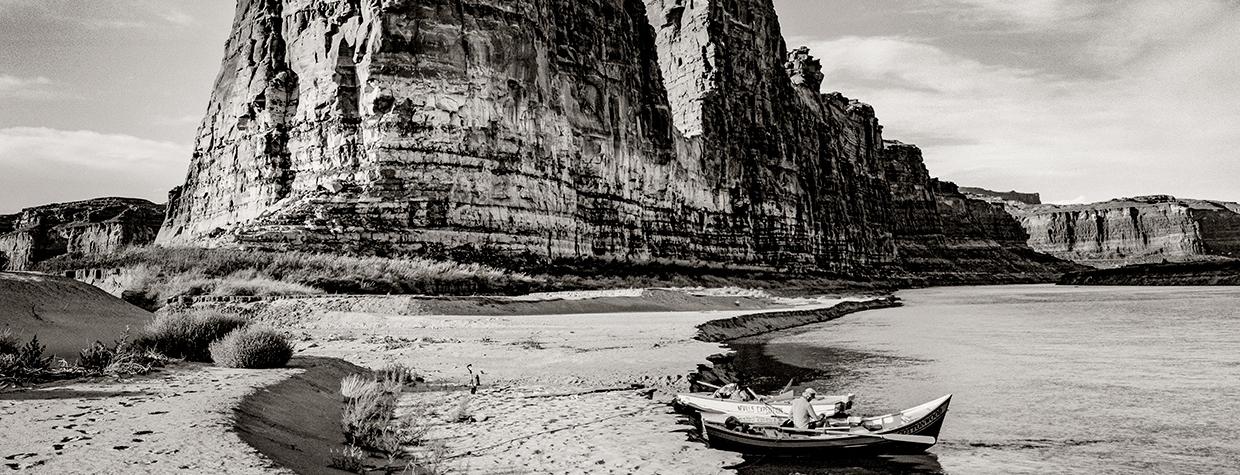In the photo above, boats from photographer Dawn Kish’s Lake Powell expedition are moored across from Hite Marina along a section of the lake where the Colorado River is flowing once again. Andy Hutchinson is in his dory in the foreground, and behind him is a replica of a boat from one of Norman Nevills’ expeditions down the Colorado in the 1930s and ’40s. (Click to see entire image.)
A Letter to Tad Nichols
Dear Tad,
My name is Dawn Kish. Like you, I’m a photographer. And like so many other photographers today, I’m a huge fan of your work. But this isn’t a fan letter. Well, maybe indirectly, it is. I’m writing to share some exciting news — exciting for me, anyway. A friend and colleague named Richard Jackson was kind enough to lend me your Graflex Crown Graphic 4x5 camera. It’s the same camera you used to shoot Glen Canyon, which is slowly re-emerging after nearly six decades of being flooded by the waters of Lake Powell. I took your camera back in there.
It’s something I’d been thinking about for a long time, ever since I read your book Glen Canyon: Images of a Lost World. The images are so beautiful, and when I look at them, I can see that the canyon wasn’t just another subject for you. It was something deeply personal. Thus, your tireless fight to try and save it.
As it turns out, Mother Nature is resurrecting your fight. Because of a decades-long drought in the Southwest, the lake is losing water at an unbelievable rate — it’s dropped 175 feet from its high-water mark and now retains less than 25 percent of its capacity.
I’ve been intrigued by the transformation and wanted to see it for myself. I wanted to walk in your footsteps. I wanted to see the canyon walls and the rock formations that you captured so beautifully in your book. And I wanted to see the river. As a river. Not as a current at the bottom of the lake. And I did.
I saw it first at Hite Marina. There it was, the mighty Colorado River flowing as it had for thousands of years. I cried. And my heart was pounding as I pulled out your camera. I made photographs of the river using Kodak Professional Tri-X Pan 320 film, just like you. And then I made more and more photographs as I explored the breathtaking canyon with a band of fellow adventurers, modern-day pirates in search of buried treasures, seeing things that none of us thought we’d ever see again.
At Tapestry Wall, I was an ant silhouetted against the massive sandstone palisade. At North Wash, I hopped into a replica of the wooden boat that Norman Nevills used to explore the very same backcountry in the 1930s. We rowed the river for about 10 miles, and hit a few rapids, until the river hit the lake.
In all, we spent 10 days exploring your canyon, but, as you know, that’s not enough time. I want to go back. And I will. Meantime, I’ll keep trying to process what I experienced in there. My editor says the word “surreal” is watered down from overuse. Maybe that’s true, but it’s the word that keeps rising up as I look back on my time in Glen Canyon, walking in your footsteps, shooting with your camera … it was surreal, all right.
Sincerely,
Dawn Kish
Editor’s Note: Retracing the steps of Tad Nichols was an aggressive undertaking, and it wouldn’t have been possible without the generosity of Kent Colbath, Bill Esposito, Alan Fitzgerald, Richard Jackson and Julie Sullivan, and the logistical support of Canyon Coolers, Fretwater Boatworks, Glen Canyon Institute, Northern Arizona University, Patagonia and Tempe Camera. To everyone who helped make this story possible, we’re much obliged.




